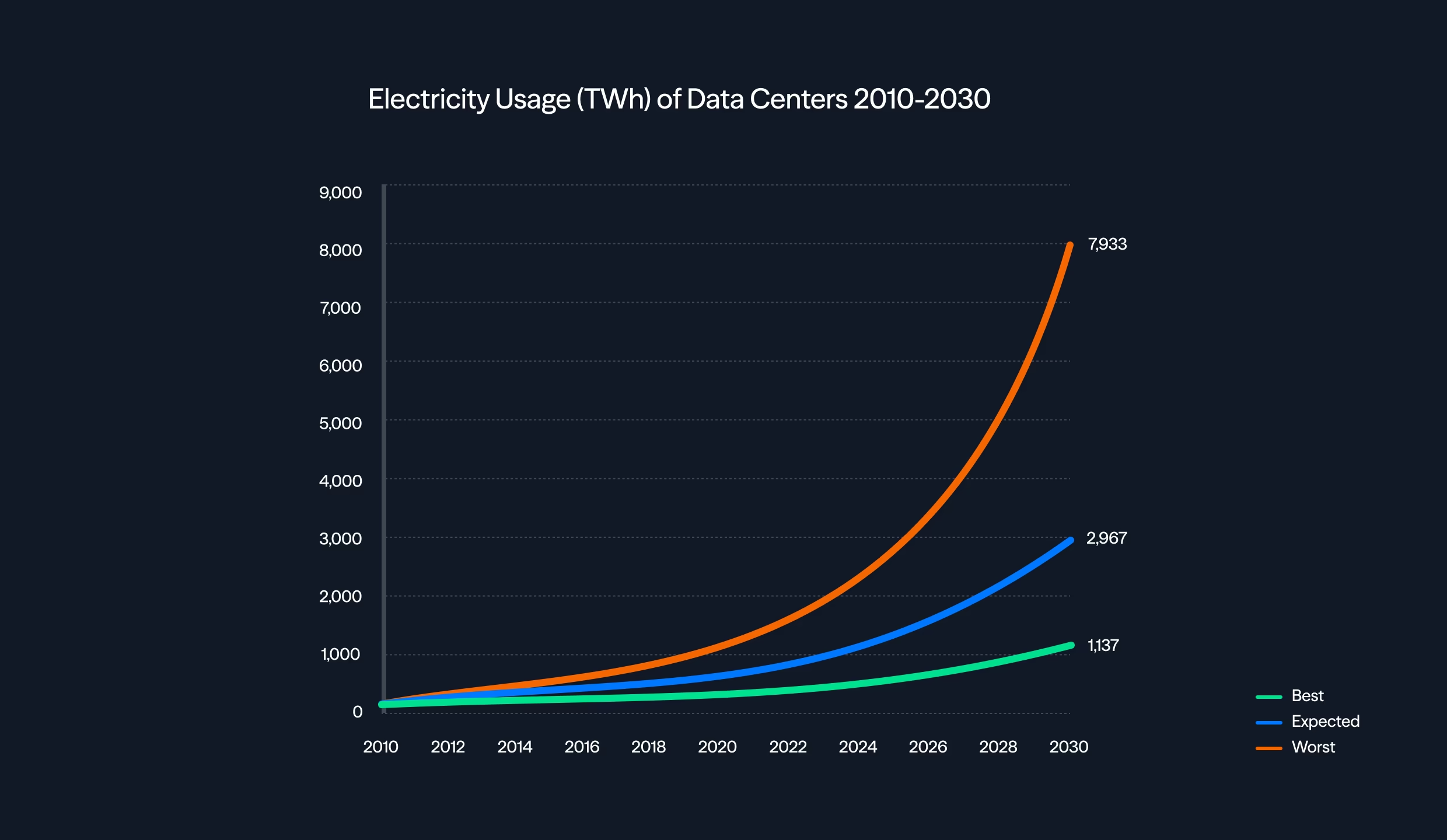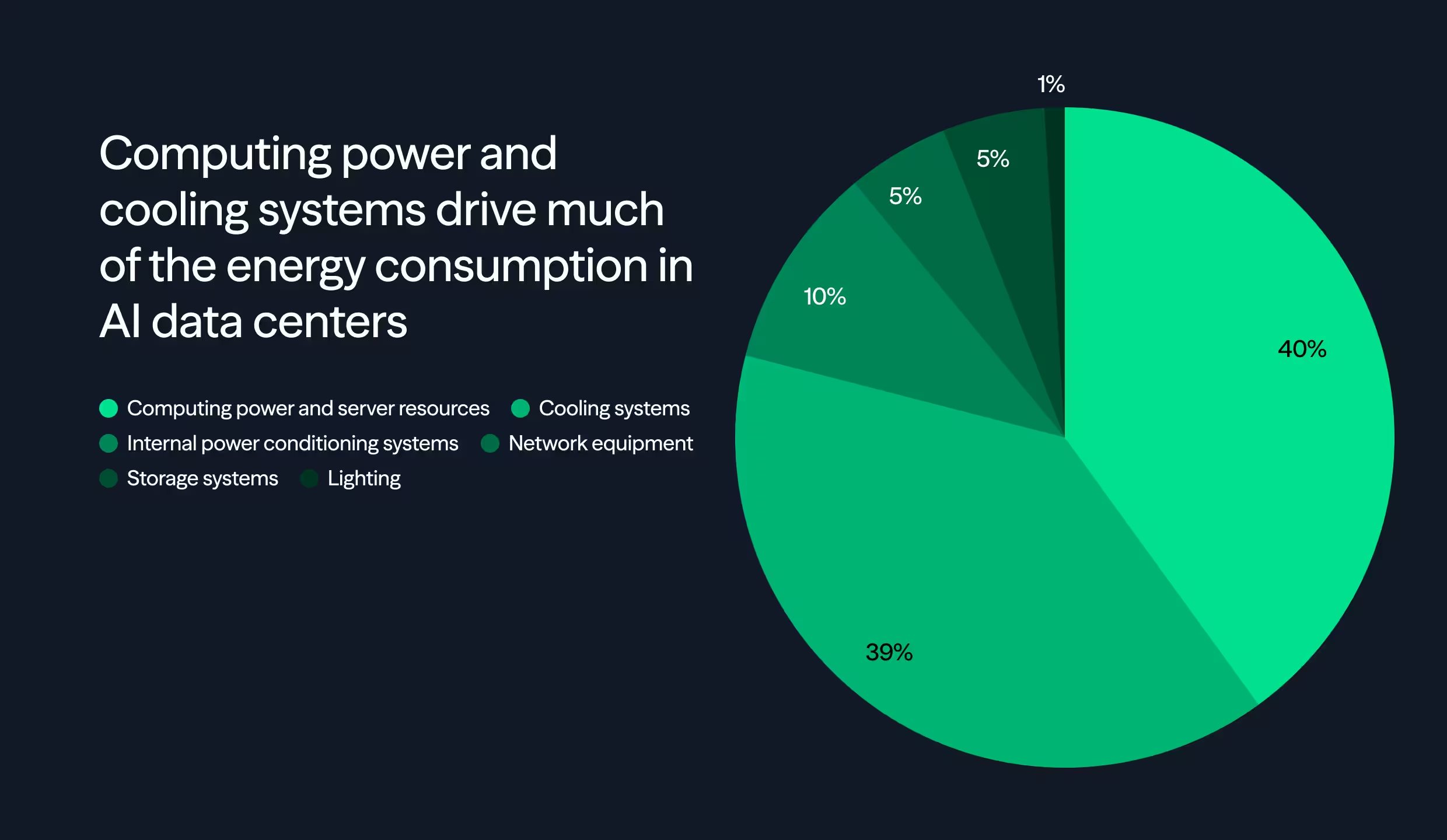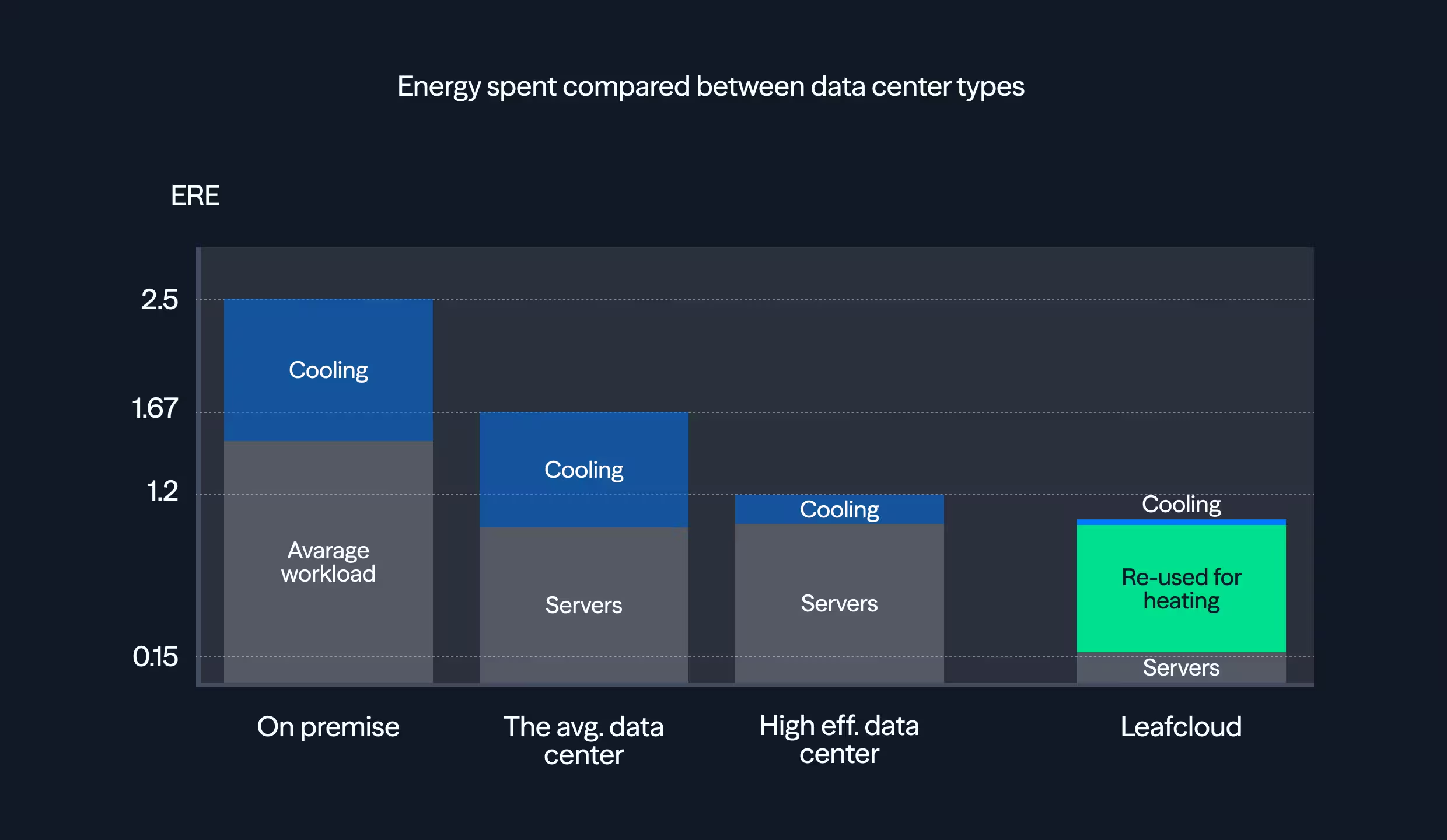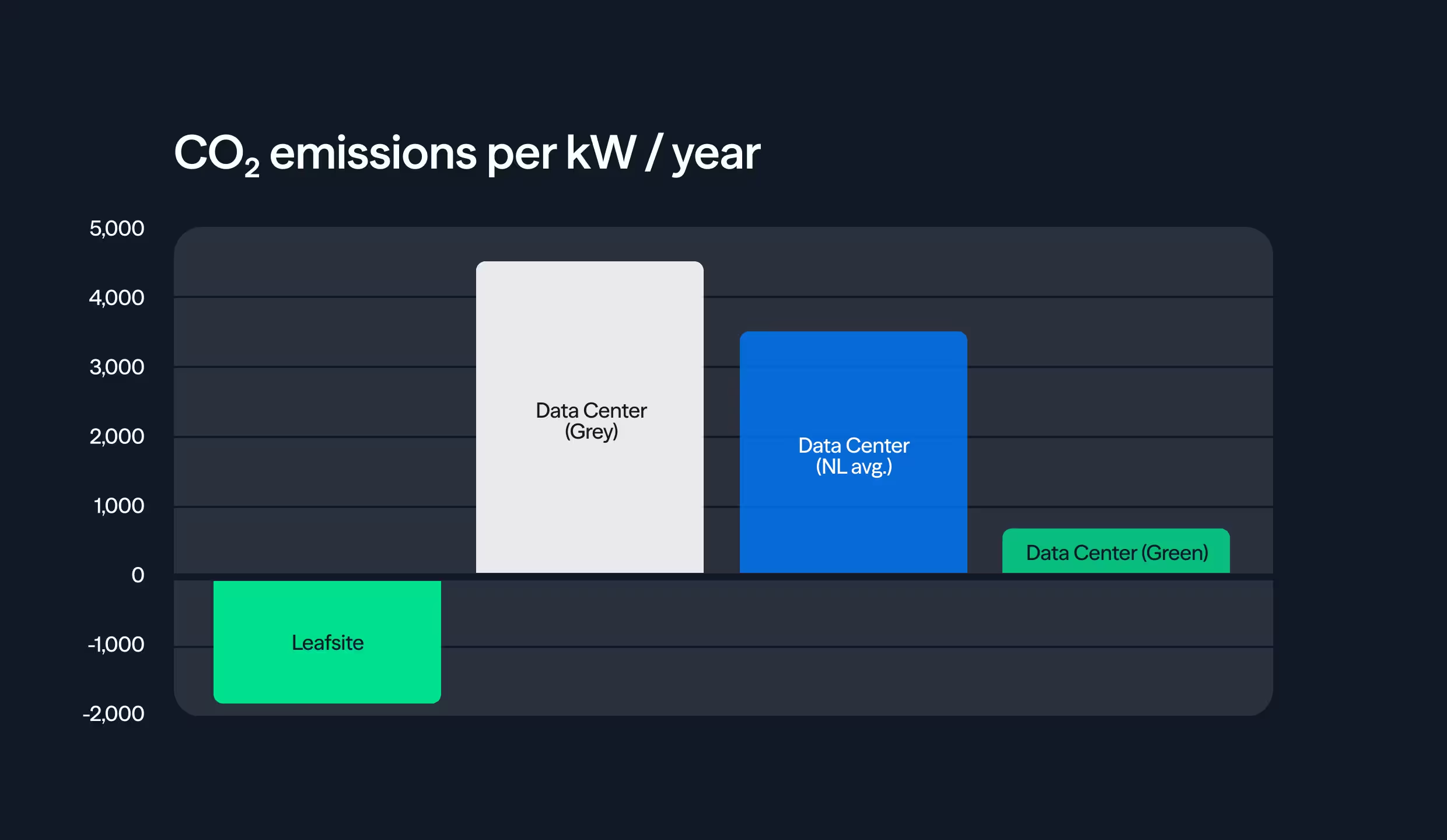Truly Green
Using server heat to provide free hot showers
What if we can provide the compute power needed for innovation and growth, without the massive waste and carbon impact?

New Whitepaper
Heating Europe with AI
Discover how AI's computational heat can warm European homes while powering innovation. Learn about the energy economics, environmental impact, and the future of sustainable computing in our comprehensive whitepaper.
Finding a better way
Let's take a look at the current state of digital infrastructure and how to improve it.
What's wrong with traditional cloud?
The traditional cloud comes at a massive cost and a lot of it runs on coal. The cloud runs in data centers. Data centers are massive buildings popping up anywhere there's cheap reliable energy. They drain energy, waste water, and take years and a massive amount of concrete to construct. As the latest AI wave takes hold, and data center energy demand is set to double by 2030, we have to find a better way of housing computing power

That’s why we created Leafcloud
We offer a European, eco-friendly, lock-in free alternative that does more than process your data —it uses server heat to deliver hot showers, proving cloud computing can actively contribute to the clean energy transition

What's behind the massive footprint of data centers?
Hyperscale data centers require vast amounts of concrete, steel, energy, and land just to exist. They guzzle water for cooling, strain power grids, and rely on diesel generators and proximity to cheap abundant energy (whatever kind is available) to stay online. All the resources that go into a data center are wasted

Leaf sites
Leafcloud uses existing urban buildings. We find space in the technical area of large buildings with a centralized heating system and start installing server racks - avoiding new construction and resource waste, while reducing both the carbon footprint and costs of hot showers for residents at our host locations, or Leaf sites

Explain?!
We’ve ditched the idea of building new massive, wasteful data centers. Instead, we put our servers in places like swimming pools, nursing homes, hotels, and apartment buildings—where heat is needed. At these host locations, we capture the heat from our servers and use it to warm water for the building, cutting their emissions and costs. The green energy used to run your workload is repurposed as heat to provide someone with a hot shower, it's that simple. It’s smarter, greener, and better for everyone

How useful is waste heat?
Servers and showers both consume energy—servers to process and move data, and showers to heat water. Interestingly, servers convert nearly all the energy they use into heat. By placing these two energy demands in the same location, we can effectively repurpose the heat generated by servers to provide hot water for the buildings they occupy. This eliminates the need to transport the heat—a process that is typically costly and wasteful—allowing almost all of it to be captured and used. This approach significantly reduces CO₂ emissions, saving up to 1,776 kg per kilowatt-year. That’s like taking 1.4 cars off the road for every kilowatt of IT

How does Leafcloud fit into the bigger picture?
Leafcloud isn’t just a green cloud—it’s a catalyst for broader sustainability challenges such as balancing energy grids, generating heat for more sustainable industrial solutions, addressing local energy inefficiencies, and providing a platform for changemakers to act on their values. Our approach also contributes directly to the UN Sustainable Development Goals (SDGs), advancing targets like sustainable infrastructure, responsible consumption, and sustainable cities and communities. To help businesses align with these global objectives, we provide CSRD-ready reporting, making it easier for organizations to track and showcase their progress toward a greener future

Why Settle for Incremental Change?
Cloud computing can be truly green, and Leafcloud proves it every day. Our solution doesn’t just tweak existing systems—it rethinks them entirely. By repurposing energy that would otherwise require yet more energy to be wasted, we’re making the cloud a force for change. Our solution is powerful, efficient, and far ahead of the pack. Why settle for incremental progress when you can join a full-blown green revolution?

Carbon Reducing
Calculate Your Yearly Emissions Reduction
Our compute heavy machines are housed in apartment complexes and care homes. That means your workload reduces emissions for heating shower water by replacing natural gas use. With the heat from your workload people get a hot shower! Find out by how much you can reduce emissions
Join the Green Cloud Revolution
Cloud doesn't have to cost the earth. At Leafcloud, we're not just offering a service—we're inviting you to be part of a movement. Every time you process data with Leafcloud, you're making a greener, smarter choice. Let's work together to build a cloud that doesn't just reduce harm but actively helps heal the planet. Ready to make a difference? Let's get started